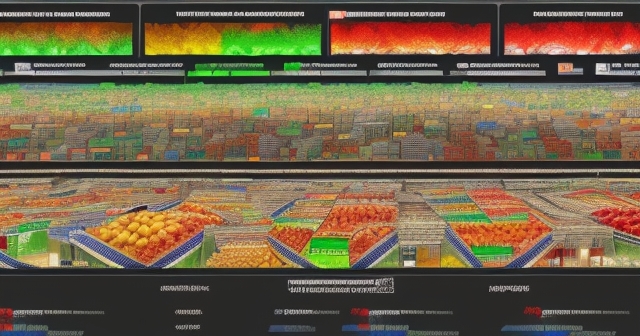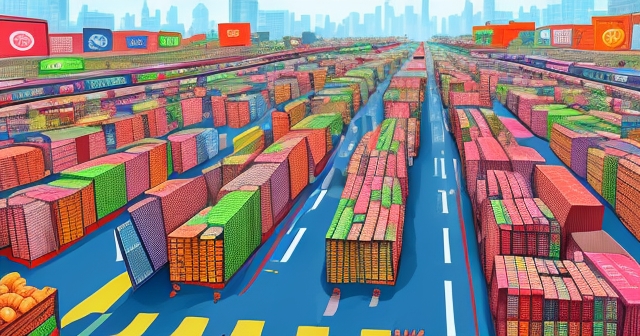
whats free market: Understanding Theory vs Practice
Table of Contents
ToggleUnpacking the Free Market: From Pure Theory to Today’s Complex Reality
Have you ever wondered what makes markets move? At its core, much of economic theory revolves around the concept of a free market. But what does that truly mean, and is it something we actually see in the world today? As investors, understanding this distinction is crucial.
We often hear about the free market as an ideal system, one where supply and demand dance together perfectly, setting prices and allocating resources without outside interference. It sounds simple, even elegant. Yet, when we look at the headlines, we see markets reacting violently to government policies, trade disputes, and regulatory changes. This tells us the picture is far more nuanced than the pure theory suggests.
Join us as we explore the foundations of the free market concept, examine the forces that inevitably shape and constrain it in the real world, and discuss why this understanding is essential for navigating the complexities of modern finance.

The Theoretical Ideal: Pillars of the Pure Free Market
Imagine a world where economic activity unfolds solely based on individual decisions, free from any external compulsion. This is the vision at the heart of the theoretical free market. In this idealized model, the economy is a spontaneous and decentralized order, emerging from countless voluntary interactions between individuals.
- The defining characteristic here is the absence of coercive impositions or restrictions regarding economic activity.
- Nobody is forced to buy or sell, produce or consume against their will.
- All exchanges are, in theory, purely consensual and driven by mutual perceived benefit.
Consider this: in a truly free market, if you have something someone else wants, and they have something you want, you can trade, and the terms of that trade are determined solely by your agreement. There are no licenses required, no permits needed, no taxes imposed on the exchange itself, and no government body dictating the price.
This theoretical framework suggests that when individuals are free to pursue their economic interests, guided by price signals determined by supply and demand, resources will naturally flow to their most valued uses, leading to efficiency and prosperity. It’s a powerful idea, and it forms the basis for many arguments in favor of minimal government intervention.

Supply Meets Demand: The Engine of Free Markets
At the heart of the pure free market mechanism are the forces of supply and demand. Think of it like an invisible hand guiding the marketplace, as famously described by Adam Smith. When demand for a good or service increases, and supply remains constant, prices tend to rise. This higher price signals producers to increase supply (or new producers to enter the market), eventually bringing prices back towards equilibrium.
Conversely, if supply exceeds demand, prices tend to fall. This lower price signals producers to reduce supply (or exit the market) and encourages consumers to buy more, again moving towards a point where the quantity supplied matches the quantity demanded at a specific price.
This continuous interplay between what consumers want (demand) and what producers are willing and able to offer (supply) is what theoretically determines prices and resource allocation in a free market. There’s no central authority setting prices; they emerge naturally from the collective actions of buyers and sellers.
Furthermore, a central principle underpinning this system is voluntary exchange. Every transaction occurs because both parties believe they will be better off as a result. A buyer gives up money because they value the good more than the money, and a seller gives up the good because they value the money more than the good. This voluntary nature is seen as key to creating economic value and driving efficiency.

Government’s Shadow: Where Pure Theory Fades
Now, let’s transition from the theoretical ideal to the world we actually inhabit. While the concept of a pure free market provides a useful analytical model, the reality is that no modern country operates as a completely unrestricted free market. Not one.
Every economy, to some degree, involves government intervention and control. Why is this the case? The reasons are manifold and often debated. Governments may intervene with stated goals such as:
- Ensuring consumer safety (e.g., food and drug regulations).
- Promoting fairness or reducing inequality.
- Protecting the environment.
- Providing public goods (like national defense or infrastructure) that markets might underprovide.
- Stabilizing the economy during times of recession or inflation.
However, interventions can also arise from less altruistic motives, such as rent-seeking (lobbying government for special privileges) or the influence of powerful incumbent interests seeking to limit competition. Regardless of the motivation, any action by a government that influences prices, limits who can participate, or restricts what can be traded represents a deviation from the pure free market ideal.
Understanding this fundamental truth – that all real-world markets are, to some extent, mixed economies combining market forces with government action – is crucial for investors. It means that purely relying on supply and demand curves to predict market behavior is insufficient; you must also consider the actual and potential impact of government policy.

Navigating Constraints: The Many Hands on the Market Scale
What forms do these government interventions take? They are varied and pervasive, acting as constraints that pull the real-world market away from its theoretical free state. As noted in the data, all constraints on the free market ultimately use implicit or explicit threats of force – meaning, if you don’t comply, there are penalties enforced by the state.
Common examples of these constraints include:
- Taxation: Governments levy taxes on income, corporate profits, sales, and specific goods (excise taxes). These taxes directly affect prices paid by consumers and received by producers, altering incentives and resource allocation.
- Regulations: Extensive rules govern nearly every industry. From environmental standards to labor laws, financial oversight (like banking regulations), and health and safety rules, regulations dictate how businesses can operate, what products can be sold, and under what conditions.
- Licensing Requirements: Many professions (doctors, lawyers, barbers, real estate agents) and businesses require licenses to operate. These requirements can restrict entry into a market, limiting competition.
- Price Controls: Although less common in major commodity markets, governments sometimes impose price ceilings (like rent control) or price floors (like minimum wage or agricultural price supports) that prevent prices from reaching their natural equilibrium.
- Quotas and Subsidies: Quotas limit the quantity of goods produced or imported. Subsidies provide financial assistance to specific industries or activities, distorting natural market signals and favoring certain producers over others.
- Prohibition of Specific Exchanges: Laws against trading illegal goods or services (like illicit drugs) are clear examples of government forbidding certain types of voluntary exchange deemed harmful to society.
- Tariffs: These are taxes on imported goods, designed to protect domestic industries by making foreign goods more expensive. Tariffs are a direct interference with international voluntary exchange and free trade principles.
Each of these mechanisms represents a government hand on the scale of the market, altering the natural balance that would otherwise be determined purely by supply and demand. As investors, recognizing these potential points of intervention is key to anticipating market shifts.

Tariffs in Focus: When Policy Jolts the System
Recent history provides a stark and compelling illustration of how government intervention, specifically through tariffs, can dramatically impact markets. The news headlines from the analyzed data period were dominated by the effects of tariff announcements and escalating trade tensions, particularly between the United States and China.
President Donald Trump’s imposition of sweeping import levies on goods from various countries, notably China, served as a real-time case study of how government policy directly contravenes free market principles. By taxing imported goods, these tariffs made them more expensive for domestic buyers, artificially altering prices and reducing the quantity of imports consumers and businesses would otherwise purchase.
The stated goal was often to protect domestic industries and encourage production at home. However, from a free market perspective, tariffs are a barrier to voluntary exchange and efficient resource allocation on a global scale. They limit consumer choice, increase costs for businesses relying on imported inputs, and can trigger retaliatory tariffs from other countries, further disrupting international trade flows.
The data clearly shows that these tariff announcements were not abstract economic concepts; they were powerful market movers. Investors reacted swiftly and negatively, demonstrating the market’s sensitivity to government actions that constrain trade and create uncertainty.
Market Turmoil: How Investors Respond to Intervention
What happens when a major government policy, like the imposition of widespread tariffs, hits a market theoretically built on free exchange? The data provides a clear answer: turmoil and selloffs.
The headlines spoke of “tariff-stunned markets” and reported significant drops in major stock indices like the S&P 500, Dow Jones Industrial Average (DJIA), and NASDAQ. One headline even bluntly stated, “Trump’s tariffs brought carnage to the stock market.” This wasn’t just minor fluctuation; it was a period of pronounced negative reaction.
Why such a strong reaction? Tariffs introduce significant uncertainty into the economic system. Businesses face higher costs for imported components or raw materials. Export-oriented companies worry about retaliatory tariffs hurting their sales in foreign markets (like the impact on US grain exports mentioned in the data). Consumer demand might shift due to rising prices on imported goods. Supply chains built over decades are suddenly threatened.
This uncertainty directly impacts investor sentiment. Fear and caution increase. Companies’ future earnings prospects become harder to predict. When investors are uncertain and fearful, they often react by selling assets, leading to price declines across the board. The data highlighted specific company stocks and sectors (like autos, refiners, grain, tech) feeling the direct or indirect heat from tariff-related fears.
The market’s reaction underscored a critical point: while the theoretical free market assumes rational actors making decisions based on clear price signals, real-world markets are heavily influenced by expectations, confidence, and the unpredictable nature of political and regulatory shifts. Interventions like tariffs remind investors that the rules of the game can change, and those changes carry tangible economic consequences.

Measuring Economic Freedom: What the Data Tells Us
Given that pure free markets don’t exist, economists and think tanks attempt to measure the *degree* of economic freedom in different countries. Organizations like the Heritage Foundation and the Fraser Institute publish annual Indexes of Economic Freedom, assessing countries based on factors such as:
| Index Factor | Description |
|---|---|
| Rule of Law | Property rights, judicial effectiveness, government integrity. |
| Government Size | Tax burden, government spending. |
| Regulatory Efficiency | Business freedom, labor freedom, monetary freedom. |
| Market Openness | Trade freedom, investment freedom, financial freedom. |
These indexes attempt to quantify how much a government’s policies align with or deviate from free market principles.
The data from these indexes, based on empirical analysis, generally shows a positive correlation between higher levels of economic freedom and measures of economic well-being. Countries scoring higher on these indexes tend to have:
- Higher per capita income and economic growth.
- Lower poverty rates.
- Better health outcomes.
- Higher overall standards of living.
This suggests that while pure laissez-faire might be an unattainable ideal, moving *towards* greater economic freedom, characterized by secure property rights, minimal regulation, lower tax burdens, and open markets, tends to yield more prosperous outcomes for a society. It provides a data-driven argument for the benefits associated with policies that reduce constraints on market forces, even within the context of a mixed economy.
The Mixed Economy: Navigating the Real-World Balance
As we’ve established, every real-world economy is a mixed economy, blending elements of free markets with government intervention. The United States economy, often cited as a leading capitalist nation, has historically always been a mix of market forces and government regulation.
This isn’t just a theoretical observation; it’s the practical reality investors and businesses face daily. You operate within a framework defined by laws, regulations, and policies that influence everything from labor costs and environmental compliance to international trade and financial transactions.
The ongoing debate is not *whether* government should play a role, but *what kind* of role, and *how much*? Finding the appropriate balance is a perpetual challenge for policymakers. Too much intervention can stifle innovation, create inefficiencies, lead to corruption, and distort markets in ways that harm economic growth, as critics of heavy regulation or protectionist tariffs argue.
On the other hand, proponents of government intervention argue that unchecked market forces can lead to significant problems like monopolies, exploitation of labor, environmental degradation, and financial instability. They contend that government is necessary to correct these “market failures,” ensure a basic level of fairness and safety, and provide essential services.
For investors, this means the economic landscape is constantly shaped not only by the invisible hand of supply and demand but also by the visible, and sometimes heavy, hand of government. Understanding the potential motivations and mechanisms of government action is as important as understanding traditional economic indicators.
A Historical Look: The Enduring Debate on Government’s Role
The tension between market freedom and government control is not new; it’s a debate that has spanned centuries and involved some of the most influential thinkers in economics and political philosophy.
- As mentioned, Adam Smith is often associated with the idea of the free market and the “invisible hand,” suggesting that individuals pursuing their self-interest in a competitive market can inadvertently benefit society as a whole.
- However, even Smith acknowledged a role for government in areas like defense, justice, and certain public works.
- The idea of a *totally* free market with *zero* government presence has rarely been advocated by serious economists as a practical model for a functioning society.
Later thinkers, like Karl Polanyi in his seminal work *The Great Transformation*, argued that the idea of a self-regulating market entirely separate from society is a dangerous fiction. Polanyi contended that markets have historically been embedded within social structures and that attempts to create purely self-regulating markets can lead to social disruption, inequality, and a pushback that ultimately results in increased, and sometimes authoritarian, government control.
This historical perspective underscores that the debate about the balance between market forces and government intervention is complex, deeply rooted in different views of human nature, society, and the economy’s purpose. It’s not a settled issue, and societies continue to experiment with different levels and types of government involvement, with consequences that directly impact the markets investors participate in.
What This Means for You as an Investor
So, why is this deep dive into the theory versus reality of the free market important for you, whether you’re just starting out or are an experienced trader?
- Firstly, it grounds your understanding in fundamental economic principles while providing a necessary dose of realism.
- You learn to appreciate the power of supply and demand but also recognize that they operate within a framework heavily influenced by human decisions.
- Secondly, it highlights the importance of considering policy risk.
- Events like the tariff-induced market selloffs demonstrate that significant government actions can be major drivers of market volatility and performance.
Finally, it encourages a more nuanced view of economic news and commentary. When you hear discussions about the “free market,” you can critically assess whether the speaker is referring to the theoretical ideal or the complex reality, and how government actions are shaping the situation being discussed.
Beyond the Ideal: The Ongoing Evolution of Markets
In conclusion, the concept of the free market serves as a powerful and useful model in economic theory, illustrating how supply, demand, and voluntary exchange can efficiently allocate resources in the absence of coercion. It provides a compelling argument for policies that reduce unnecessary barriers to trade and competition.
However, the reality of modern economies is that they are universally mixed economies, operating under varying degrees of government influence and constraint. As the recent market turmoil caused by tariffs vividly demonstrated, government actions are not merely theoretical footnotes; they are significant, often disruptive forces that directly impact market dynamics, company performance, and investor sentiment.
Navigating financial markets successfully requires understanding both the underlying economic principles of supply and demand and the pervasive influence of government policy. It means appreciating the ideals of economic freedom while operating within the practical realities of regulation, taxation, and political decision-making.
The balance between fostering market freedom and implementing necessary government oversight is a perpetual challenge, with profound consequences for economic growth, stability, and individual prosperity. As investors, staying informed and adaptable in this ever-evolving landscape is key to long-term success.
whats free marketFAQ
Q:What is a free market?
A:A free market is an economic system where prices for goods and services are determined by open competition among private businesses without government intervention.
Q:How does government intervention affect the free market?
A:Government intervention can distort market operations, creating inefficiencies and impacting supply, demand, and pricing through regulations, tariffs, and controls.
Q:Can a completely free market exist?
A:No, in reality, all economies exhibit some form of government intervention, resulting in mixed economies rather than purely free markets.
You may also like
Calendar
| 一 | 二 | 三 | 四 | 五 | 六 | 日 |
|---|---|---|---|---|---|---|
| 1 | 2 | 3 | 4 | 5 | 6 | 7 |
| 8 | 9 | 10 | 11 | 12 | 13 | 14 |
| 15 | 16 | 17 | 18 | 19 | 20 | 21 |
| 22 | 23 | 24 | 25 | 26 | 27 | 28 |
| 29 | 30 | 31 | ||||
發佈留言
很抱歉,必須登入網站才能發佈留言。